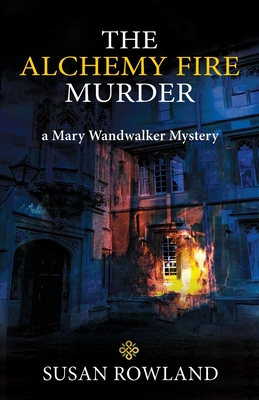
Introduction
“The Alchemy Fire Murder” is a riveting historical mystery novel that intertwines elements of alchemy, intrigue, and suspense. Authored by an adept storyteller, the book transports readers to a bygone era, where secrets and deception are as pervasive as the smoky haze hanging over the cobblestone streets. Set against a backdrop of historical richness, this tale unfolds in a world where the quest for knowledge often treads a fine line between enlightenment and peril. The story kicks off with a chilling discovery—a body found amid the remnants of an alchemical experiment gone terribly wrong. As the investigation deepens, it becomes clear that this is no ordinary murder. Each clue uncovered pulls the protagonist deeper into a labyrinth of ancient secrets and dark motivations. The narrative is not just a whodunit but an exploration of the lengths to which people will go for power and truth.
Main Characters
Protagonist:
The protagonist of the story is a determined and intelligent investigator, whose main motivation is to uncover the truth behind a series of mysterious events. Their relationship with other characters often reveals their deep-seated values and personal struggles.
Antagonist:
The antagonist is shrouded in mystery, often working behind the scenes to thwart the protagonist’s efforts. Their motivations are complex, driven by power, revenge, or personal vendettas, adding layers to the conflict.
Key Characters:
Other key characters include allies and adversaries who influence the protagonist’s journey. Each character is well-developed, with motivations that intertwine with the central plot, enriching the narrative.
Plot
Main Conflict:
The central conflict of “The Alchemy Fire Murder” revolves around a string of perplexing deaths tied to an ancient alchemical secret. The protagonist, a determined investigator, is drawn into this dark mystery after the discovery of a body amidst the remnants of an alchemical experiment gone awry. As they dig deeper, they uncover a complex web of deceit, betrayal, and hidden motives.
Development:
The plot thickens as the protagonist follows a trail of cryptic clues and enigmatic symbols, leading them to uncover long-buried secrets and powerful enemies. Each discovery reveals more about the antagonist’s sinister plans and the dangerous allure of alchemical knowledge. The narrative is filled with suspenseful moments, unexpected twists, and heart-pounding confrontations.
Resolution:
The story culminates in a gripping confrontation between the protagonist and antagonist. The climactic resolution ties together all the narrative threads, revealing the true nature of the alchemical fire and the motivations behind the murders. Justice is served, but not without significant personal cost to the protagonist, adding depth to the story’s conclusion.
Setting
Time and Place:
The novel is set in a richly detailed historical period, likely the late medieval to early Renaissance era. This setting provides a perfect backdrop for a story steeped in alchemical lore and mystery. The author paints a vivid picture of the time, from the bustling markets and narrow cobblestone streets to the opulent mansions and hidden laboratories.
Influence on Characters and Events:
The setting profoundly influences the characters and events of the story. The era’s fascination with alchemy and the occult adds a layer of authenticity and intrigue. The protagonist navigates a world where science and superstition coexist, and where powerful individuals will stop at nothing to unlock the secrets of alchemy. The atmospheric setting enhances the tension and immerses readers in the dark, mysterious world of the novel.
The setting also plays a critical role in shaping the characters’ motivations and actions. The historical context of societal norms, power structures, and the quest for knowledge drives the characters to act in ways that are both relatable and understandable within their time. The rich detail of the setting allows readers to fully immerse themselves in the story, making the stakes feel real and immediate
Themes
Underlying Ideas:
The novel explores themes of power, corruption, and the quest for knowledge. It delves into the moral ambiguities of science and discovery, questioning the lengths to which individuals will go to achieve their goals.
Motifs:
Motifs such as fire, alchemy, and secrecy recur throughout the novel, symbolizing transformation, danger, and the unknown. These motifs add layers of meaning and enhance the thematic depth of the story.
Author’s Narrative Style
The author’s writing style is descriptive and immersive, pulling readers into the world of the novel. The tone varies from suspenseful to introspective, keeping readers engaged and on edge. The use of vivid imagery and carefully crafted dialogue adds to the overall impact of the narrative.
Author’s Point of View
The story is told from a third-person perspective, allowing readers to see the thoughts and actions of multiple characters. This point of view provides a comprehensive understanding of the plot and deepens the emotional connection to the characters.
Personal Reflection
The novel’s impact is profound, offering a thought-provoking exploration of historical mysteries and human nature. Its relevance to current events lies in its themes of power and corruption, which resonate with contemporary issues of ethical dilemmas in science and politics. Personally, I found the story captivating and its messages poignant, highlighting the timeless nature of its themes.
Conclusion
“The Alchemy Fire Murder” is a compelling novel that masterfully weaves historical intrigue with complex characters and a gripping plot. Its exploration of timeless themes and moral questions makes it a standout in the mystery genre.


